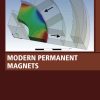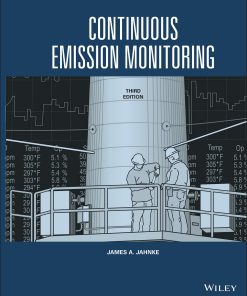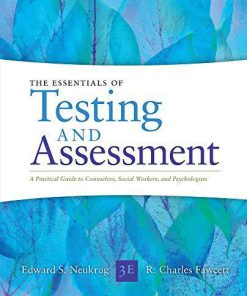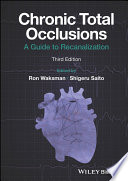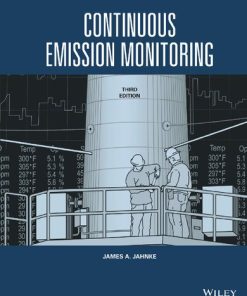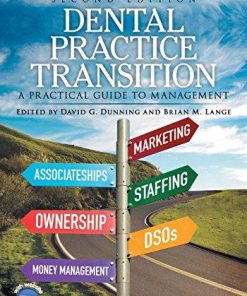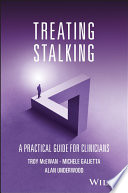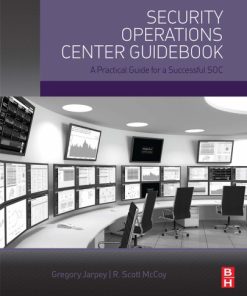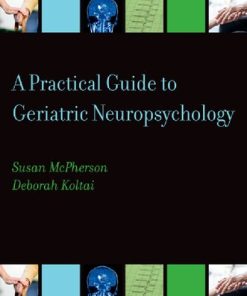(Ebook PDF) Aggregation Induced Emission AIE A Practical Guide 1st edition by Jianwei Xu 0128243368 9780128243367 full chapters
$50.00 Original price was: $50.00.$25.00Current price is: $25.00.
Aggregation-Induced Emission (AIE): A Practical Guide 1st edition by Jianwei Xu – Ebook PDF Instant Download/DeliveryISBN: 0128243368, 9780128243367
Full download Aggregation-Induced Emission (AIE): A Practical Guide 1st edition after payment
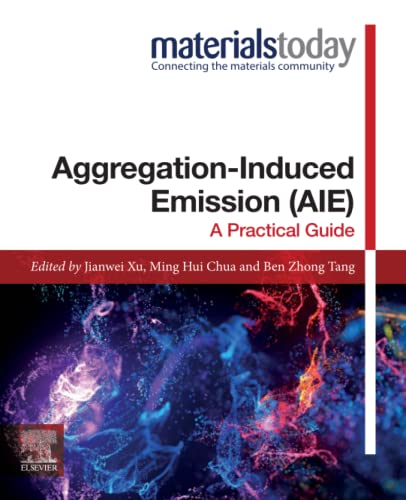
Product details:
ISBN-10 : 0128243368
ISBN-13 : 9780128243367
Author: Jianwei Xu
Aggregation-Induced Emission (AIE): A Practical Guide introduces readers to the topic, guiding them through fundamental concepts and the latest advances in applications. The book covers concepts, principles and working mechanisms of AIE in AIE-active luminogens, with different classes of AIE luminogens reviewed, including polymers, three-dimensional frameworks (MOFs and COFs) and supramolecular gels. Special focus is given to the structure-property relationship, structural design strategies, targeted properties and application performance. The book provides readers with a deep understanding, not only on the fundamental principles of AIE, but more importantly, on how AIE luminogens and AIE properties can be incorporated in material development.
Aggregation-Induced Emission (AIE): A Practical Guide 1st Table of contents:
Chapter 1: Fundamental principles of AIE
Abstract
1: Introduction
2: Restriction of intramolecular rotations
3: Restriction of intramolecular vibrations
4: Restriction of intramolecular motions
5: New perspective: Quantum chemistry calculation
6: Conclusions and outlook
References
Chapter 2: Fundamental chemistry and applications of boron complexes having aggregation-induced emission properties
Abstract
1: Introduction
2: Scaffolds for construction of AIE-active boron complexes
3: Conclusions
References
Chapter 3: Aggregation-induced emission polymers
Abstract
Acknowledgment
1: Introduction
2: Synthesis of AIE polymers
3: Structures of AIE polymers
4: Applications of AIE polymers
5: Conclusions and perspectives
References
Chapter 4: Chiral aggregation-induced emission molecules: Design, circularly polarized luminescence, and helical self-assembly
Abstract
1: Introduction
2: Molecular design
3: Aggregation-induced emission
4: Circular dichroism
5: Circularly polarized luminescence
6: Helical self-assembly
7: Conclusions
References
Chapter 5: AIE-active supramolecular gel systems
Abstract
Acknowledgment
1: Introduction
2: Strategies to build AIE-active supramolecular gel systems with examples
3: Stimuli-responsive AIE-active supramolecular gels and applications
4: Application of AIE-active supramolecular gel systems in BioSensing and bioimaging
5: Conclusions
References
Chapter 6: Mechanochromic luminescence in AIE luminogens
Abstract
1: Introduction
2: From AIE to MCL
3: MC luminogens with high contrast
4: Summary and perspective
References
Chapter 7: Photochromic and thermochromic luminescence in AIE luminogens
Abstract
1: Fundamentals of photochromism and thermochromism
2: Photochromic and thermochromic AIE systems
3: Challenges and outlook
References
Chapter 8: AIE-active rare-metal-free phosphorescent materials
Abstract
1: Introduction
2: RTP-emissive small molecules
3: RTP-emissive polymers
4: Summary
References
Chapter 9: AIE luminogens exhibiting thermally activated delayed fluorescence
Abstract
Acknowledgment
1: Introduction
2: AIE-TADF materials
3: Conclusions and outlook
References
Chapter 10: Aggregation-induced emission luminogens for organic light-emitting diodes
Abstract
1: Introduction
2: Conventional fluorescent AIEgens
3: Phosphorescence AIEgens for OLEDs
4: Aggregation-induced delayed fluorescence (AIDF)
5: AIDF (aggregation-induced delayed fluorescence) based on the conventional donor-acceptor (D-A) structural design
6: AIDF based on through-space charge transfer (TSCT) for OLEDs
7: Conclusions and perspective
References
Chapter 11: Liquid crystalline aggregation-induced emission luminogens for optical displays
Abstract
1: Introduction
2: Molecular design of AIE-active LC materials
3: AIE-active LCs toward optical applications
4: Conclusions
References
Chapter 12: Electrofluorochromism in AIE luminogens
Abstract
1: Principle/conception of electrofluorochromism
2: Electrofluorochromic luminogens and devices
3: Electrofluorochromic AIE molecules
4: Electrofluorochromic AIE polymers
5: Potential applications
6: Conclusions and perspectives
References
Chapter 13: AIE-active materials for photovoltaics
Abstract
Acknowledgments
1: Introduction
2: AIEgens in CdTe PV cells
3: AIEgens in dye-sensitized solar cells (DSSC)
4: AIEgens in organic photovoltaics (OPV)
5: AIEgens in perovskite solar cells
6: AIEgens in luminescent solar concentrators (LSC)
7: Conclusions and outlook
References
Chapter 14: AIE molecular probes for biomedical applications
Abstract
1: Introduction
2: Protein detection
3: Nucleic acid detection
4: Cellular organelles and structures
5: Lipids
6: Inflammation and cancer research
7: Cytogenetic studies
8: Microbiology study
9: Conclusions and perspectives
References
Chapter 15: Recent advances of aggregation-induced emission nanoparticles (AIE-NPs) in biomedical applications
Abstract
1: Introduction
2: Strategies for the fabrication of AIE-NPs
3: Biomedical applications of AIE-NPs
4: Metal nanoclusters with AIE characteristics
5: Summary and future perspectives
References
Chapter 16: AIE bio-conjugates for biomedical applications
Abstract
1: Introduction
2: Reaction for AIE bio-conjugation
3: Biosensing
4: Cell imaging
5: In vivo imaging and image-guided therapy
6: Conclusions and perspectives
References
Chapter 17: AIE-active polymers for explosive detection
Abstract
Acknowledgment
1: Introduction of explosive detection
2: Mechanisms of explosive detection
3: AIE conjugated polymers for explosive detection
4: AIE nonconjugated polymers and their explosive detection
5: Perspectives and outlooks
References
Chapter 18: AIE-based chemosensors for vapor sensing
Abstract
1: Introduction
2: Sensing mechanisms of AIE-based chemosensors
3: AIE-based chemosensors for nitroaromatic explosive vapor
4: AIE-based chemosensors for acid and amine vapor
5: AIE-based chemosensors for volatile organic compounds (VOCs)
6: Conclusions and perspectives
References
Chapter 19: AIEgen applications in rapid and portable sensing of foodstuff hazards
Abstract
1: Introduction
2: AIEgen applications in rapid and portable sensing of foodstuff hazards
3: Summary and perspectives
References
Chapter 20: Computational modeling of AIE luminogens
Abstract
1: Introduction
2: Effect of excitonic coupling and electron-vibration coupling on emission in aggregates
3: The quantitative calculation of luminescence quantum yield
4: The elimination of nonradiative channels in aggregates
5: Enhancement of the radiative processes in aggregates
6: Conclusions and outlook
People also search for Aggregation-Induced Emission (AIE): A Practical Guide 1st:
aggregation-induced emission luminogens
aggregation-induced emission carbon dots
aggregation-induced emission mechanism
aggregation-induced emission dye-doped photoresist
aggregation induced emission review
Tags:
Aggregation,Induced Emission,Practical Guide,Jianwei Xu
You may also like…
Uncategorized
Engineering - Environmental
Continuous Emission Monitoring 3rd Edition by James Jahnke 1119434025 9781119434023
Politics & Philosophy - Social Sciences
Business & Economics - Industries
Security operations center guidebook – a practical guide for a successful SOC


